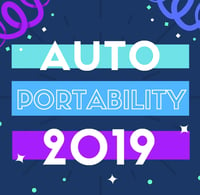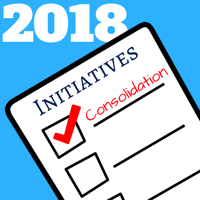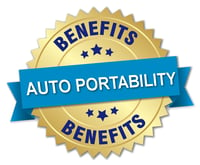-
Blog
- 401k Cash Outs
- 401k Consolidation
- 401k Plan Termination
- America's Mobile Workforce
- Assisted Roll-in
- Auto Enrollment
- Auto Portability
- Auto Portability Simulation
- Automatic Roll-In
- Automatic Rollover
- Automatic Rollovers
- Boston Research Technologies
- CARES act
- Common Mistakes
- DIY Roll-In
- DOL Advisory Opinion
- EBRI
- Employee Benefit News
- ERISA Advisory Council
- Financial Services Roundtable
- Financial Wellness
- How-To
- In-Plan Consolidation
- Leakage
- Lifetime Plan Participation
- Lost Participants
- Managed Portability
- Mandatory Distributions
- MarketWatch
- Missing Participant IRA
- Missing Participants
- National Retirement Savings Cash Out Clock
- Participant Transition Management
- PLANSPONSOR
- Portability Services Network
- PSCA
- Public Policy
- RCH Services
- Retirement Income
- Retirement Plan Portability
- retirement research
- Retirement Savings Consolidation
- Retirement Savings Portability
- Roll-In
- Safe Harbor IRA
- Saver's Match
- Security
- Small Accounts
- Stale Dated Checks
- Synthetic Tenure
- Uncashed Check Services
- Uncashed Distribution Checks
- Video
- Webcast
- What is a Missing Participant?
Consolidation Corner Blog
Consolidation Corner is the Retirement Clearinghouse (RCH) blog, and features the latest articles and bylines from our executives, addressing important retirement savings portability topics.
Auto Portability 2019: The Year in Review
 At Retirement Clearinghouse (RCH), we’re excited about the 2020 prospects for auto portability. Before we’re too far into a new decade, we wanted to pause, take a breath and share with you some highlights from 2019, a year that’s positioned the newest automatic, default plan feature for widespread adoption.
At Retirement Clearinghouse (RCH), we’re excited about the 2020 prospects for auto portability. Before we’re too far into a new decade, we wanted to pause, take a breath and share with you some highlights from 2019, a year that’s positioned the newest automatic, default plan feature for widespread adoption.
The Playbook for Conducting Diligent Missing Participant Searches
 Sponsors of active retirement plans are increasingly challenged by the problem of missing participants, and the difficulties they face in performing diligent searches. After all, ensuring that plan participants (or their beneficiaries) receive the benefits they’re owed is a sponsor’s primary fiduciary responsibility.
Sponsors of active retirement plans are increasingly challenged by the problem of missing participants, and the difficulties they face in performing diligent searches. After all, ensuring that plan participants (or their beneficiaries) receive the benefits they’re owed is a sponsor’s primary fiduciary responsibility.
Missing Participants: An Ounce of Prevention Equals a Pound of Cure
 When Ben Franklin coined the adage “an ounce of prevention is worth a pound of cure” he wasn’t considering the problem of missing participants, but 401(k) plan sponsors would be wise to heed Ben’s sage advice.
When Ben Franklin coined the adage “an ounce of prevention is worth a pound of cure” he wasn’t considering the problem of missing participants, but 401(k) plan sponsors would be wise to heed Ben’s sage advice.
Today, plan sponsors face an explosion of missing participants, driven by the ongoing adoption of auto enrollment and increasing workforce mobility. Their problems are further compounded by the administrative burden required to locate them, combined with a regulatory minefield that offers little guidance and is prone to taking inconsistent enforcement actions.
New Insights into the Problem of Missing Participants
 Today, Boston Research Technologies (BRT) and Retirement Clearinghouse (RCH) issued a joint press release announcing the key findings from a survey examining the retirement industry’s missing participant problem. The survey, The Mobile Workforce’s Missing Participant Problem, is the first to examine the problem from the perspective of the participant and offers unique insights into its various dimensions.
Today, Boston Research Technologies (BRT) and Retirement Clearinghouse (RCH) issued a joint press release announcing the key findings from a survey examining the retirement industry’s missing participant problem. The survey, The Mobile Workforce’s Missing Participant Problem, is the first to examine the problem from the perspective of the participant and offers unique insights into its various dimensions.
Two Retirement Public Policy Initiatives Moving Forward in 2018
 In late 2017, retirement industry observers breathed a collective sigh of relief when “Rothification” of 401(k) plans, once considered as a part of new tax legislation, was abandoned. With Rothification in the rear-view mirror, policymakers have begun turning their attention to other, more-promising initiatives.
In late 2017, retirement industry observers breathed a collective sigh of relief when “Rothification” of 401(k) plans, once considered as a part of new tax legislation, was abandoned. With Rothification in the rear-view mirror, policymakers have begun turning their attention to other, more-promising initiatives.
Why Consolidation Should Top the List of Initiatives for Plan Sponsors in 2018
 Today, it’s commonly-accepted practice for retirement plan sponsors to focus on three major initiatives to promote retirement adequacy: participation, saving and diversification.
Today, it’s commonly-accepted practice for retirement plan sponsors to focus on three major initiatives to promote retirement adequacy: participation, saving and diversification.
While these three initiatives are proven, an emerging best practice is for plan sponsors to expand this list, incorporating consolidation, where plan participants are encouraged to consolidate balances from former employers’ plans, using their current-employer’s plan to manage their retirement savings.
Five Ways to Make Retirement Savings Portability a Priority in 2018
 It’s become widely-accepted that retirement savings portability is proven to address the small account problem for 401(k) plan sponsors, as well as preserve participants’ savings currently lost to cashout leakage.
It’s become widely-accepted that retirement savings portability is proven to address the small account problem for 401(k) plan sponsors, as well as preserve participants’ savings currently lost to cashout leakage.
However, the concept of retirement savings portability is relatively new. At year’s end, most plan sponsors’ attention will be focused on other plan design issues, such as auto enrollment/escalation, the lineup of investment options, enrollment, education, retirement income solutions and so forth.
Washington Recognizes Need for Retirement Plan Portability Solutions – Part 2
 In January 2016, this blog published a post on the November 2015 letter from Senator Patty Murray (D–WA) of the Senate HELP committee, signed by a bicameral group of Congressional members, urging then Department of Labor (DOL) Secretary Thomas Perez to encourage the DOL’s Employee Benefits Security Administration to issue guidance on auto portability.
In January 2016, this blog published a post on the November 2015 letter from Senator Patty Murray (D–WA) of the Senate HELP committee, signed by a bicameral group of Congressional members, urging then Department of Labor (DOL) Secretary Thomas Perez to encourage the DOL’s Employee Benefits Security Administration to issue guidance on auto portability.
Auto Portability: Who Will Benefit?
 Auto Portability is the routine, standardized and automated movement of an inactive participant’s retirement account from a former employer’s retirement plan to their active account in a new employer’s plan. By dramatically reducing cashouts and improving retirement readiness, Auto Portability will deliver broad benefits to America’s defined contribution system, its participants and to the entire American economy.
Auto Portability is the routine, standardized and automated movement of an inactive participant’s retirement account from a former employer’s retirement plan to their active account in a new employer’s plan. By dramatically reducing cashouts and improving retirement readiness, Auto Portability will deliver broad benefits to America’s defined contribution system, its participants and to the entire American economy.
But who benefits from Auto Portability, and how?
New EBRI Research Finds $2T Saved From Automated Portability

As much as $2 trillion could be retained in the U.S. retirement systems if Auto Portability were fully implemented, according to new research by the Employee Benefit Research Institute (EBRI). The research establishes Auto Portability as a leading retirement industry public policy initiative, placing it ahead of auto IRA initiatives and just behind universal DC coverage in terms of impact on total retirement savings shortfall.
-
Blog
- 401k Cash Outs
- 401k Consolidation
- 401k Plan Termination
- America's Mobile Workforce
- Assisted Roll-in
- Auto Enrollment
- Auto Portability
- Auto Portability Simulation
- Automatic Roll-In
- Automatic Rollover
- Automatic Rollovers
- Boston Research Technologies
- CARES act
- Common Mistakes
- DIY Roll-In
- DOL Advisory Opinion
- EBRI
- Employee Benefit News
- ERISA Advisory Council
- Financial Services Roundtable
- Financial Wellness
- How-To
- In-Plan Consolidation
- Leakage
- Lifetime Plan Participation
- Lost Participants
- Managed Portability
- Mandatory Distributions
- MarketWatch
- Missing Participant IRA
- Missing Participants
- National Retirement Savings Cash Out Clock
- Participant Transition Management
- PLANSPONSOR
- Portability Services Network
- PSCA
- Public Policy
- RCH Services
- Retirement Income
- Retirement Plan Portability
- retirement research
- Retirement Savings Consolidation
- Retirement Savings Portability
- Roll-In
- Safe Harbor IRA
- Saver's Match
- Security
- Small Accounts
- Stale Dated Checks
- Synthetic Tenure
- Uncashed Check Services
- Uncashed Distribution Checks
- Video
- Webcast
- What is a Missing Participant?

